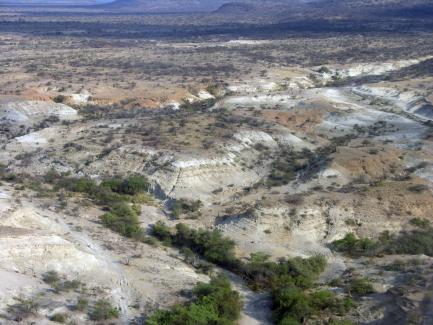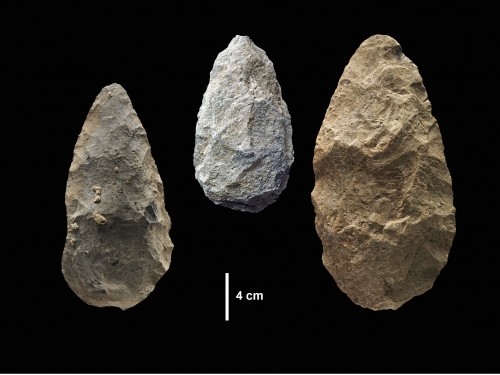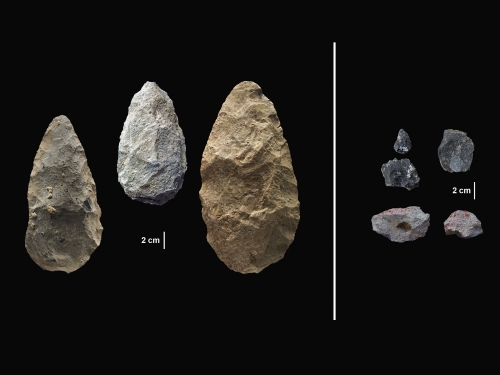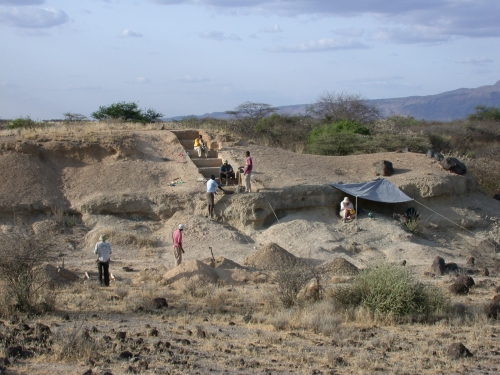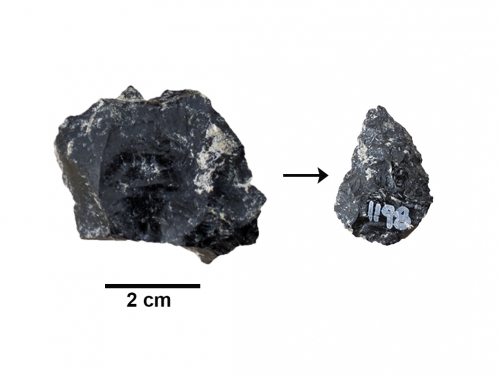A bird’s eye view of the Olorgesailie Basin in southern Kenya, which holds an archeological record of early human life spanning more than a million years. This landscape shows a shift in the environment between 500,000 years ago, which marks the last known evidence of the handaxe toolmakers in the Olorgesailie Basin, and the more recent sediments dated 320,000 years and younger, which preserve the Middle Stone Age evidence, including the color pigments and sophisticated tools made from obsidian. White and light brown sections of the landscape indicate the ancient lake and lakeside environment associated with older handaxe technology. Middle Stone Age archeological sites occur in the darker brown sediments, which mark the end of the stable lake environment and the onset of dramatic environmental unpredictability and uncertainty in the region marked by fluctuations between wet and dry conditions.
Photo courtesy Human Origins Program, Smithsonian

